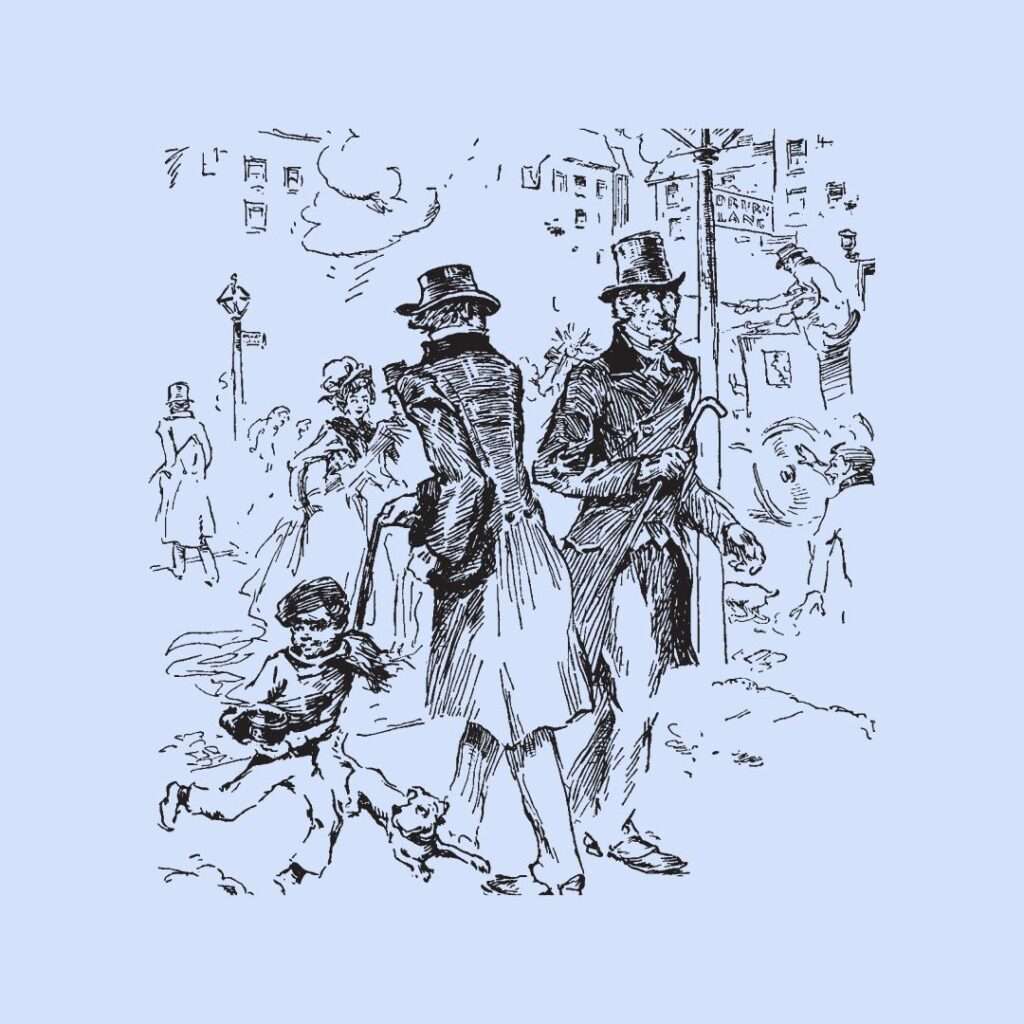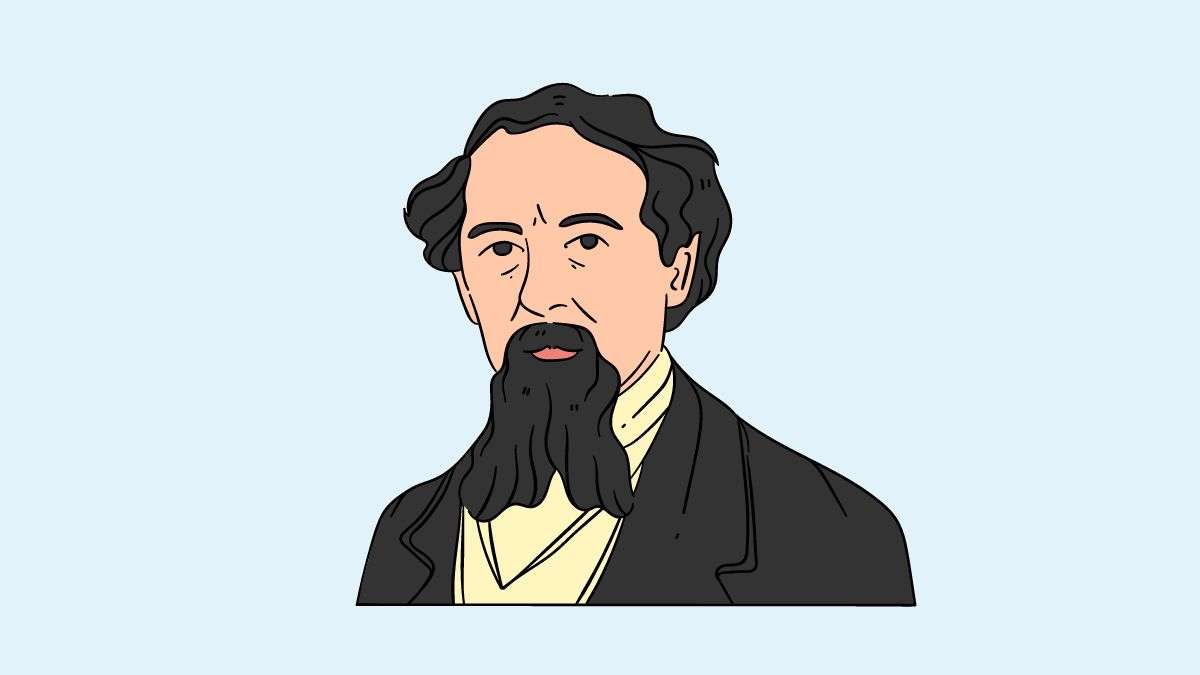Table of Contents
- Introduction
- Who Was Charles Dickens?
- Understanding Charles Dickens’ Writing Style
- Why Write Like Charles Dickens
- How to Write Like Charles Dickens: 4 Tips
- Conclusion
Introduction
Few authors like Charles Dickens have left an indelible mark on the vast literature landscape. His name is synonymous with masterful storytelling, vivid characters, and a unique writing style that has captivated readers for generations. Dickens’ works, such as Great Expectations, Oliver Twist, and A Christmas Carol, have become classics that continue to be celebrated and studied.
But what is it about Dickens’ writing that sets him apart? What makes his stories so compelling and his characters so unforgettable? The answer lies in his distinctive style, which combines rich descriptions, social commentary, and a keen understanding of the human condition. Dickens had a gift for crafting intricate plots, creating memorable characters, and painting vivid pictures with his words.
This write-up uncovers the secrets of Charles Dickens’ writing style. We will explore the key characteristics that define his work, his techniques to engage readers, and the enduring impact of his literary legacy. By understanding what makes Dickens’ writing so unique, we can learn valuable lessons that can help us improve our writing skills.
Whether you’re an aspiring writer looking to hone your craft or simply a lover of great literature, this post will provide insights and inspiration. Get ready to dive deep into the world of Charles Dickens and discover how you can master the art of writing like one of the greatest authors of all time. So, grab a cup of tea, settle in, and begin this exciting adventure together.
Who Was Charles Dickens?
Charles Dickens was a seminal figure in the Victorian era of English literature, renowned for his acute social commentary and rich tapestry of characters. Born in 1812 in Portsmouth, England, Dickens rose from a challenging and impoverished childhood to become one of the most famous writers of his time. His works often depict the struggles of the poor and the injustices they faced in a rapidly industrializing society.
His early career saw him working as a journalist, a stint during which he honed his writing skills and developed a sharp eye for detail, characteristics defining his literary style. His serialized newspaper stories captured the public’s imagination, and this format became instrumental in how a vast and eager readership consumed his novels.
Dickens’ narrative techniques were innovative. He popularized complex, interleaved storylines and characters representing England’s various social strata and regional dialects. The serialized nature of his novels created a unique relationship with his readers, as they eagerly anticipated the next installment, making his characters a part of the popular culture of the time.
Beyond his fictional works, Dickens also published articles and essays on societal issues, continuing to use his influence to champion the causes of reform and social justice. His legacy endures not just in the canon of English literature but also in the continued relevance of his themes to social and economic issues.
Understanding Charles Dickens’ Writing Style
To truly appreciate Charles Dickens’ genius, we must delve into the intricacies of his writing style. Dickens was a master of the written word, crafting tales that have stood the test of time and continue to captivate readers today. Rich descriptions, vivid imagery, and a keen eye for social commentary characterize his unique approach to storytelling.
Rich Descriptions and Vivid Imagery
One of Dickens’ hallmarks is his ability to paint a picture with words. He had an uncanny knack for bringing characters and settings to life through vivid descriptions and evocative language. From the filthy streets of London to the opulent mansions of the wealthy, Dickens’ prose transports readers into the heart of his stories.
For example, his description of the character Miss Havisham in Great Expectations:
“She was dressed in rich materials—satins, and lace, and silks—all of white. Her shoes were white. And she had a long white veil dependent on her hair and bridal flowers in her hair, but her hair was white.”
With just a few sentences, Dickens conjures up an image of a haunting, ethereal figure forever trapped in the past.
Social Commentary and Themes
Dickens was not merely a storyteller but also a keen observer of society and its ills. His novels often served as a commentary on the social issues of his time, such as poverty, inequality, and injustice. Through his characters and plotlines, Dickens shed light on the plight of the poor and the oppressed and used his platform to advocate for change.
In Oliver Twist, for instance, Dickens tackles the harsh realities of child labor and the workhouse system in Victorian England. Through the eyes of the young protagonist, readers are confronted with the cruelty and inhumanity of a society that turns a blind eye to the suffering of its most vulnerable members.
Narrative Techniques and Reader Engagement
Dickens was a master of narrative techniques that kept readers engaged and emotionally invested in his stories. He often employed cliffhangers, leaving readers in suspense at the end of each chapter, eager to turn the page and discover what happens next. His plots were intricate and multi-layered, with numerous subplots and characters that intertwined in surprising ways.
Dickens also had a talent for creating memorable characters that readers could relate to and empathize with. From the lovable orphan Oliver Twist to the miserly Ebenezer Scrooge, Dickens’ characters were complex, flawed, and deeply human. Through their struggles and triumphs, readers could see themselves and the world in a new light.
Why Write Like Charles Dickens
Writing like Charles Dickens is a skill that can elevate your writing to new heights. By emulating the techniques and style of this literary giant, you can enhance your writing prowess and create stories that captivate and engage your readers.
Timeless Appeal and Relevance
Dickens’ storytelling has a timeless appeal that resonates with readers today. His ability to create vivid characters, intricate plots, and evocative settings has made his works enduring classics. By studying and incorporating elements of Dickens’ style into your writing, you can tap into that magic and create stories that stand the test of time.
His themes and social commentary remain remarkably relevant despite the passage of time since Dickens’ era. He explored issues such as poverty, social inequality, and the human condition, which are still pertinent today. Prominent authors like George Orwell also cover similar issues, albeit with different styles. By writing like Dickens, you can address contemporary issues and engage with your audience on a deeper level.
Crafting Compelling Narratives
Adopting elements of Dickens’ style can help you craft compelling narratives that keep readers hooked from beginning to end. Dickens was a master of creating complex, multi-layered plots that wove together multiple storylines and characters. By studying his techniques, you can learn how to structure your own stories to keep readers engaged and eager to turn the page.
Dickens also had a talent for creating memorable characters that leaped off the page. His characters were often larger-than-life, with distinct personalities, quirks, and flaws. By emulating his character development techniques, you can create characters that feel real and relatable to your readers, drawing them into your story and making them care about what happens to your protagonists.
Resonating with Your Audience
Writing like Dickens can help you resonate with your audience on an emotional level. Dickens was known for his ability to evoke strong emotions in his readers, whether it was laughter, tears, or outrage at social injustice. By studying his techniques for creating emotional resonance, you can learn how to craft stories that touch your readers’ hearts and leave a lasting impact.

Dickens also had a gift for creating immersive, atmospheric settings that transported readers to another time and place. By paying attention to how he described settings and using sensory details to bring them to life, you can create a similar sense of immersion in your writing, making your readers feel like they are alongside your characters.
How to Write Like Charles Dickens: 4 Tips
Now that we’ve explored the significance of Charles Dickens’ writing style and why emulating his techniques can elevate your writing, it’s time to dive into the practical aspects of incorporating Dickensian elements into your work. In this section, we’ll provide you with valuable tips and techniques to help you create memorable characters, craft intricate storylines, and develop vivid settings that would make even Dickens himself proud.
1. Creating Memorable Characters
One of the hallmarks of Charles Dickens’ writing is his ability to create unforgettable characters that leap off the page and into readers’ hearts and minds. To emulate this aspect of his style, focus on developing well-rounded characters with distinct personalities, quirks, and motivations. Give your characters unique names that reflect their personalities and help them stand out in the reader’s mind. Use vivid descriptions to bring your characters to life, highlighting their physical appearance, mannerisms, and speech patterns.
2. Crafting Intricate Storylines
Another key element of Dickens’ writing is his ability to weave intricate storylines that keep readers engaged from beginning to end. To structure your plots like Dickens, consider using multiple plot threads that intertwine and converge as the story progresses. Introduce subplots and secondary characters that add depth and complexity to your narrative. Use foreshadowing and subtle hints to build suspense and keep readers guessing what will happen next. Don’t be afraid to take your characters on a journey filled with twists, turns, and unexpected revelations.
3. Developing Vivid Settings
Dickens was a master at creating vivid, immersive settings that transported readers to another time and place. To bring your settings to life like Dickens, use rich, sensory details to describe your story’s world’s sights, sounds, smells, and textures. Pay attention to the little details that make a setting unique, such as the architecture of buildings, the period’s fashion, or the era’s social customs. Use metaphors and similes to paint a picture in the reader’s mind and help them feel they are alongside your characters.
4. Exercises and Prompts
To practice and refine your skills in writing like Charles Dickens, try these exercises and prompts:
- Choose a character from one of Dickens’ novels and write a scene or chapter in the style of Dickens, focusing on capturing the character’s unique voice and personality.
- Take a simple plot idea and expand it into a complex, multi-layered storyline with multiple plot threads and subplots.
- Describe a setting from your own life, such as your hometown or a favorite vacation spot, using rich, sensory details and vivid imagery in the style of Dickens.
By incorporating these tips and techniques into your writing practice, you’ll be well on your way to mastering the art of writing like Charles Dickens. Remember, emulating a literary giant like Dickens is a journey, not a destination. With patience, perseverance, and a willingness to experiment and take risks, you’ll develop your unique voice while paying homage to one of the greatest writers ever.
Conclusion
Throughout this article, we’ve delved into how to write like Charles Dickens, one of the most renowned authors in literary history. By understanding his unique writing style, techniques, and the reasons behind his enduring legacy, aspiring writers can learn valuable lessons to enhance their craft.
The key takeaways from this journey include recognizing the importance of rich descriptions, vivid imagery, and social commentary in Dickens’ works. Incorporating these elements into your writing allows you to create immersive and thought-provoking narratives that resonate with readers across generations.
